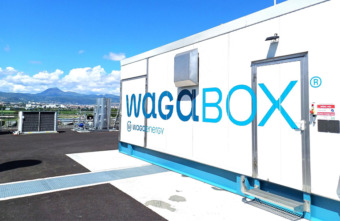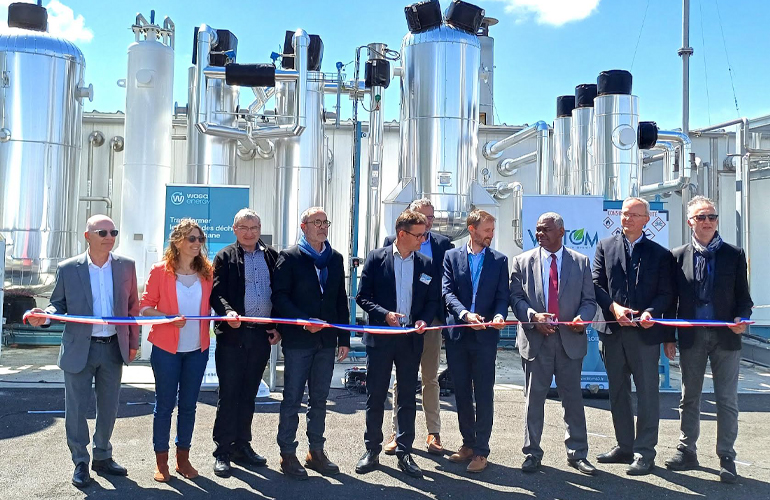In France, VALTOM, the public waste management authority for Clermont-Ferrand, and compatriot landfill gas (LFG) to renewable natural gas (RNG) technology provider Waga Energy SA have officially inaugurated VALTOM Énergie Biométhane, a novel RNG production unit in Clermont-Ferrand that upgrades both LFG from the Puy-Long Landfill and raw biogas from the anaerobic digestion (AD) plant at the Vernéa waste management facility.
Commissioned in Clermont-Ferrand on December 18, 2024, VALTOM Énergie Biométhane is said to be the first European renewable natural gas (RNG) production unit using a dual landfill gas and biogas source.
It is the result of cooperation between VALTOM, the public authority in charge of household waste recovery and treatment in the Puy-de-Dôme and northern Haute-Loire regions, in the center of France, and Waga Energy, a specialist in RNG production on landfill sites.
Thanks to WAGABOX technology, developed and patented by Waga Energy, this facility valorizes both the landfill gas (LFG) from the Puy-Long landfill and the biogas from the methanization unit at the Vernéa cluster, VALTOM’s household waste valorization center, located just a few hundred meters from each other.
The RNG obtained after biogas purification is injected directly into the GrDF network, supplying homes and businesses in the area, as well as the local CNG refueling station.
I’m proud to inaugurate this new WAGABOX unit, which produces RNG from a hybrid biogas source. It represents a technological breakthrough and demonstrates our industrial expertise and ability to carry out complex, innovative projects. And I’m delighted with this successful partnership with VALTOM, with whom we have successfully completed a circular economy project, at the service of the region, its inhabitants, and the environment, said Nicolas Paget, EVP of Waga Energy.
Strengths circular bioeconomy
The WAGABOX unit supplies up to 15 GWh (51,183 MMBtu) of RNG per year, equivalent to the consumption of around 2,000 French households or around 60 buses running on compressed biomethane (bioCNG).

By substituting fossil natural gas with RNG, its commissioning avoids the emission of around 2,500 tonnes of carbon dioxide equivalents (CO2eq) per annum, based on the methodology defined by the European Renewable Energy Directive II (RED II) and using International Sustainability and Carbon Certification (ISCC) certified emission factors for a standard WAGABOX project in France.
RNG also makes it possible to decarbonize certain uses that are difficult to “electrify”, such as industry and transport, while strengthening the region’s energy sovereignty.
Local funding
This project is part of a global approach to biowaste recovery undertaken by VALTOM since 2019.
The biowaste collected separately and sent to the methanizer is now used to produce RNG to fuel the trucks collecting the biowaste: a very concrete local example of the circular economy.
The project represented an investment of EUR 3.5 million, financed jointly by VALTOM and Waga Energy, through a joint company called “VALTOM Énergie Biométhane”, which receives the revenues generated by the sale of RNG.
The French Agency for Environment and Energy Management (ADEME) provided a EUR 339,000 subsidy for the project, and “VALTOM Énergie Biométhane” is backed by Crédit Agricole Centre France to finance the WAGABOX unit.
To mobilize residents and encourage them to play an active part in their territory’s ecological transition, a participatory financing scheme was also launched in spring 2024 on the Enerfip platform, raising EUR 180,000.
It’s up to local authorities to play an active part in the energy transition. This can only be achieved by and for the territories! With this innovative project, carried out with Waga Energy, we are actively contributing to the implementation of a 100 percent local and renewable energy mix, based on our waste, said Laurent Battut, President of VALTOM.



